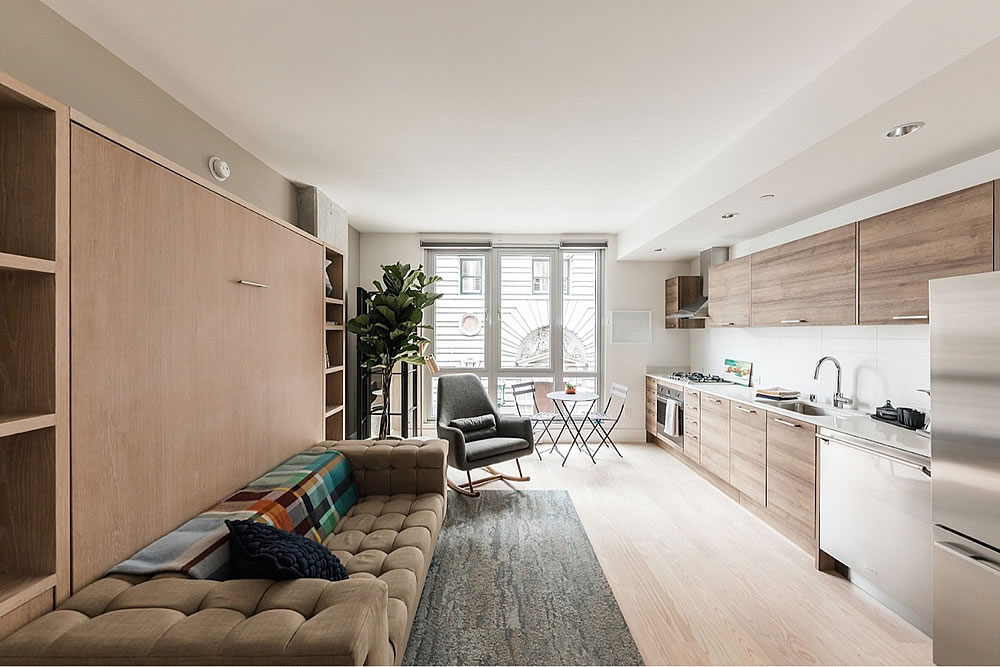The 423-square-foot studio unit #211 at 1075 Market Street, a “lovely unit with [an] open floor plan at Stage 1075,” which is “located close to shops, transportation & tech companies,” has just re-sold for $400,000, which is officially “over asking!” according to all industry stats and aggregate metrics, such as Redfin’s “Compete Score,” as the “asking price” for the unit, which started at $529,000 back in March of last year, was dropped to $399,000 this past December. And yes, that’s still $946 per square foot, which isn’t exactly cheap!
On an apples-to-apples basis, however, the re-sale represents a net 32.2 percent drop in value for the “naturally affordable” Mid-Market unit and neighborhood comp over the past five years as unit #211 at 1075 Market Street had been acquired for $590,000, or closer to $1,395 per square foot, in February of 2019.



With drops like these, when all transaction costs are included, I’m assuming the sellers may have to wire money to the bank to cover the difference? Before a sale can close, the bank must vet that the seller has the cash on hand to cover the loss? How have other commenters seen transactions like this play out?
“Before a sale can close, the bank must vet that the seller has the cash on hand to cover the loss?”
I’ve never knowingly been in that situation though I thought that the title agent confirms that all funds are in place to extinguish the seller’s loan and other liabilities before the close of escrow takes place.
The key piece of information we need to know about this sale is as follows:
02/2019: Sold, $590,000.
05/2020: Listed, $599,000.
In other words, this seller held the asset for about fifteen months before they initially attempted to sell it, failed to do so in a timely manner, and then proceeded to chase the market down for a few years.
I’m personally a little loathe to compare how local property compares to what you could have gained in the stock market, because I think that the chief purpose of a home is to provide a place to live, not to make capital gains. But there were/are other units in this building available for rent.
I think this seller would still have the bulk of their down payment still in their brokerage account today had they forgone the purchase of this unit, took the hit from renting and kept the difference invested in the S&P 500.
This seller held for 59 months. To give you a sense for how bad this was, if you had put $590K in the S&P 500 for 59 months prior to the low of December of 2008, and then sold everything on that date of that low, you would not have lost as much money as this seller.
Market rent would have been about $2000 and just the property tax and HOA were $1100. The $900 difference x 59 months was $53,000. Just the inflation loss on the money was TWICE that amount. So no, this thing had literally zero value as a housing asset, even if it had resold for $590K. The costs you were paying to own it were actually more than the market rent. The loss was additional.
I question market rent of $2k. A condo for lease in a wannabe-luxury building would be closer to $3k/mo.
You could have looked at the Zillow listing price history (name link) and discovered that they were last asking $2050 to rent this very unit in 2021 (and rents haven’t gone anywhere since then).
The reality is exactly as I said. A) Had you picked the worst possible day in modern history to start an equivalent-length hold in the S&P, you still would have done better than this place. B) The value of this place “as a place to live” was not realized by the owner, because he had a monthly payment (plus inflation loss) that was more than that, so the loss was not offset in any way by his ability to realize this value without paying out every cent.
Kyle S.: if you’re thinking that lease rate isn’t quite right, you can check out a similar, 423 ft.² studio located five floors higher up that is currently asking $2,100 per month. Don’t know what it was renting for in 2020, but given recent inflation I assume it was for a little less back then. There are a remarkable number of units in this building that are available on the corporate relocation rental market, fully furnished.